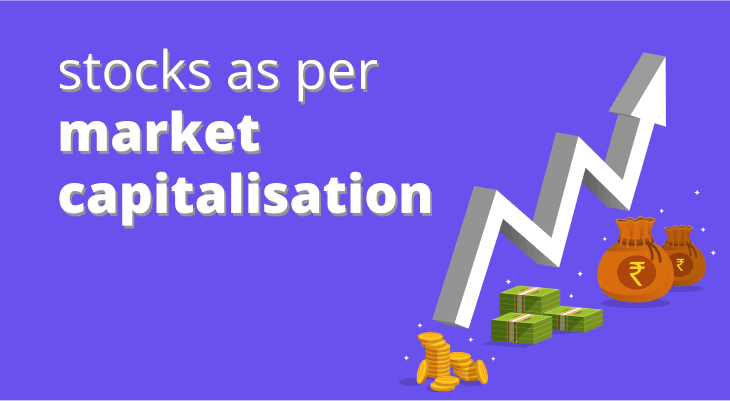
When to Sell A Stock: A Guide for Investors
Investing in the stock market involves not only buying but also knowing when to sell. The decision to sell a stock can significantly impact your investment portfolio. In this blog, we’ll explore key considerations for selling stocks, provide insights into the ideal holding period, and explain aspects like - when to sell a stock, when to buy and sell stocks, and how long to hold a stock.
Know When to Sell A Stock
Deciding when to sell a stock is a critical aspect of successful investing. Several factors influence this decision. First, consider your time horizon. If you’re investing for the long term, market fluctuations may not significantly impact your strategy. However, if you need the funds in the short term, you might need to adjust your approach. Next, evaluate your risk tolerance. Some investors prioritise safety over higher returns, while others are willing to take on more risk for potential gains. Understand your comfort level and align your strategy accordingly.
Reasons for selling include fundamental deterioration (when a company’s financial health declines), reaching a price target, or if a stock becomes overvalued. Additionally, consider cutting losses if a stock starts declining significantly.
Importance of Long-Term Investments
Before diving into when to sell a stock, let’s emphasise the importance of long-term investing. Here are some reasons why holding stocks for the long haul can be beneficial:
Compound Growth
Over time, stocks tend to appreciate. By staying invested, you allow your investments to benefit from compound interest and growth.
Riding Out Volatility
Stock markets can be volatile in the short term. However, historical data shows that over extended periods (years or decades), the market tends to recover from downturns.
Tax Efficiency
Holding stocks for more than a year qualifies you for long-term capital gains tax rates that are generally lower than short-term rates.
How Long Should You Hold A Stock If It Is Making a Loss?
Facing losses can be challenging, but it’s essential to evaluate loss-making stocks objectively:
Assess Fundamentals
Consider whether the company’s fundamentals have changed. If the business prospects remain strong despite short-term setbacks, holding on might be prudent.
Cut Your Losses
However, if a stock consistently underperforms, it’s crucial to cut your losses. Holding onto a sinking ship rarely leads to positive outcomes.
Ideal Holding Period Of A Stock
So, the question arises – how long should you hold a stock?
The ideal holding period varies based on individual circumstances:
Time Horizon
Determine your investment time horizon. If you’re investing for retirement, you likely have a longer horizon. Adjust your strategy accordingly.
Risk Tolerance
Understand your risk tolerance. Some investors can weather market fluctuations, while others prefer less risk. Align your holding period with your risk profile.
Market Cycles
Consider the market cycle. Bull markets typically last two to four years, with significant gains early on. Be prepared to take profits during strong rallies.
Price Targets
Set price targets. If a stock reaches your predetermined target, consider selling a portion or all of your position.
Remember, there’s no one-size-fits-all approach. Each investor’s situation is unique. Educate yourself, seek professional advice, and create an investment plan that aligns with your financial goals.
Conclusion
In summary, before deciding when to buy and sell stocks it requires thoughtful analysis, balancing risk, and understanding your investment objectives. Whether you’re holding for the long term or making tactical adjustments, stay informed and make decisions based on your unique circumstances.
FAQ
What are some reasons to sell a stock?
Some reasons to sell a stock include fundamental deterioration, reaching a price target, overvaluation, or cutting losses.
How long should I hold a stock for?
The ideal holding period depends on your time horizon, risk tolerance, market cycle, and price target. Generally, holding stocks for the long term can offer benefits such as compound growth, tax efficiency, and riding out volatility.
How do I set a price target for a stock?
A price target is an estimate of the future value of a stock based on various factors such as earnings, growth, valuation, and industry trends. You can use different methods to calculate a price target, such as discounted cash flow, relative valuation, or dividend discount model.
What are some common volume indicators for selling stocks?
Volume indicators measure the amount of trading activity in a stock. Some common volume indicators for selling stocks are On Balance Volume (OBV), Chaikin Money Flow (CMF), and Klinger Oscillator.
What are the new SEBI rules for intraday trading and how do they affect selling stocks?
The new SEBI rules for intraday trading require brokers to collect the minimum margin from traders upfront and report the peak margin utilised by traders four times a day. These rules affect selling stocks by reducing the leverage and increasing the penalty for exceeding the margin limit.


